Below are the original research notes as I had spent years researching contradicting information on the Widow White’s Tavern in Basking Ridge, New Jersey. Often I like to post research in hopes that other researchers can see what’s been gathered and take the discussion to a new level. Please feel free to reach out if any other items are discovered. (Brooks Betz, Bernards Township Historian – Originally gathered in 2009. Updated April 2017)
Taverns and Inns of the 18th and 19th Centuries
In the 18th and 19th centuries, the tavern was one of the most important institutions in the country. Called variously inns, taverns, ordinaries, victualling houses or hotels, these facilities provided rest, food, and libation for weary travelers passing through an area. The sight of a tavern was a most welcome one to a weary traveler. The tavern was also the second most important building in the community. Next to the church, the tavern provided a town or village with a central focus in which businesses and people could conduct their affairs and exchange ideas, being among the few structures open to the public- While an urban inn or tavern had a definite social hierarchy in which certain classes were excluded, the rural inns were not able to discriminate as freely and consequently entertained a more diversified clientele with merchants, travelers, and gentlemen often sharing the same room, if not the same bed.
The Event that Changed America Forever at Widow White’s Tavern
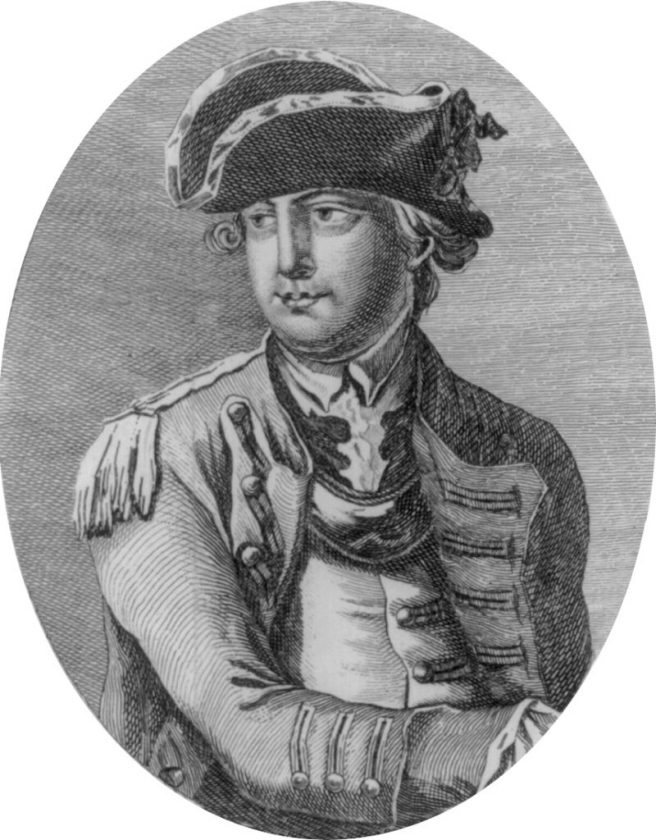
At about 4 am on December 13, 1776, General Charles Lee (1731-1782), was alarmed by Major Wilkinson while he was writing a letter to General Gates about George Washington in an upstairs bedroom of the Widow White’s Tavern. All hell broke loose, and the General who had hoped to become General Washington’s replacement was now in chains and on his way to New Brunswick as a POW. But what became of Widow White’s Tavern? One interesting note is that we have some pretty concrete information on the Widow White’s Tavern. We know the owners, and we know when Widow Mary White died. But what else do we know? Before being White’s Tavern, there were whispers that it was known as Brewster’s Tavern. We also know that the tavern was eventually torn down. Let’s see what else we can learn.
What’s in a Name
Here’s what’s been documented so far as far as the name goes, as the owners have been uncovered on the original 106-acre farm:
- Brewster’s Tavern – Still searching for the Brewster / Samuel Brown connection and a transaction.
- Notes: William Brewster Mayflower – The Brewster Genealogy Vol. 1
- Zachariah Allerton Brewster, b. abt. 1730; d. abt. 1800; m. twice. Res. Morristown, N. J., (dig deeper?)
- Samuel Brown kept a tavern in front of his home. Samuel Brown died in 1763 at 51 and is buried in the Basking Ridge Presbyterian Cemetery. Samuel Brown willed the 106-acre farm and home to his wife, Mary Whitaker Brown, and established a generous endowment for the Basking Ridge Presbyterian Church. One stipulation: Mary would have to sell the farm at her death.
- Whites Tavern :
- Mary remarries to her 2nd husband, Edwin (Ebenezer) White, b. c.1715 and became the owner with Mary through marriage.
- Edwin/Ebenezer White died c.1775.
- Widow White’s Tavern:
- Mary Whitaker White, aka “Widow White,” owned the tavern till her death on May 28, 1794, where it was noted in Samuel Brown’s will that Mary’s farm/estate must sell the property at her death. (So we’re guessing it was sold).
- Timothy Brewster and his wife Phoebe Jervis (Jarvis) (Mary’s birth sister) may have managed the tavern, perhaps with Widow White, from Dec 1, 1777, to March 1779 (verify- see document below), which answers the question about Aunt White. Phoebe was Mary’s sister, the daughter of their mother, Elizabeth Jervis.
- (Basking Ridge’s Most Historic Event) The capture of General Charles Lee was on the morning of December 13, 1776.
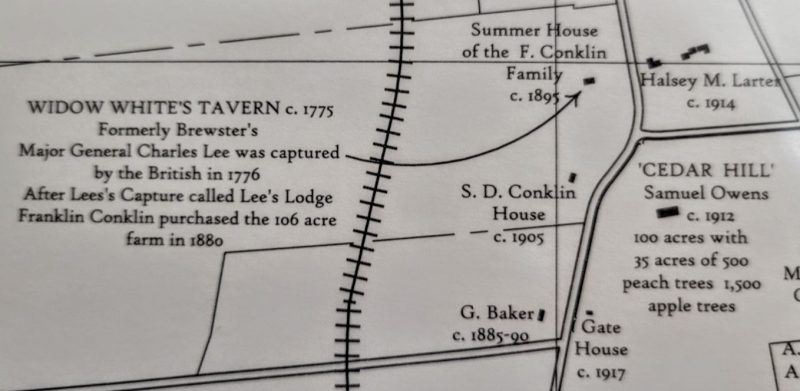
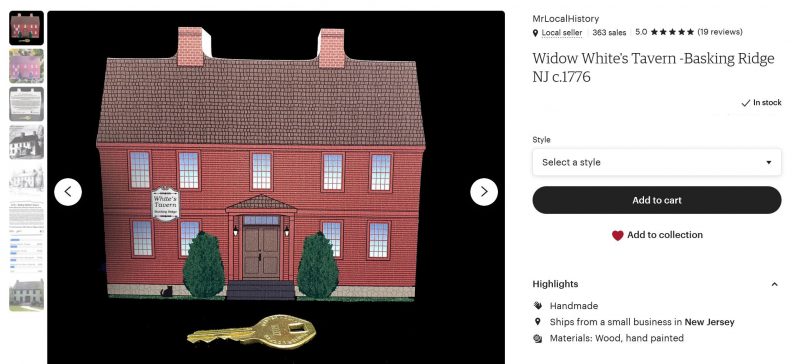
Online exclusive.
Post Tavern Period Owners
Our research has gathered all the names we know of that became owners of the farm property, which was eventually split into several parcels just off South Finley Avenue and Colonial Drive in the Basking Ridge section of Bernards Township.
- Charles De Loney (owner who rented the home)
- Dr. Boyle – 1820 – site of his assassination attempt
- William Lewis (Uncle of Johnathan Dayton) first additions
- Mr. Morris
- James H. Thompson – major alterations
- J.F. Cox – 1873 map bought the home for $40,000
- Bank of Bethlehem President
- Malcolm Thompson
- Stephen Bennett
- James H. Thompson
- 1880 – Franklin Conklin Sr. purchases the 106-acre farm. Lee Mansion/ Lee Lodge – Built two additional houses on the property.
- Lee Lodge summer home (Franklin Conklin Jr.) 1943 Franklin Sr. dies – (in 1950, noted no structures remained from Widow White’s)
- Donald R and Jane H Hagner 1961 survey
- Murphy House (Built 1962- 2006) 4 Colonial Drive, Basking Ridge, NJ
- Shepard, David & Katherine (2006-Present)
White’s Tavern Notes
- Mary is not her older sister Elizabeth! Mary Jarvis Whitaker Brown White was born in 1719 and died May 28, 1794 (est. 75 years old).
- Still looking for her marriage date to Samuel Brown
- Looking for her marriage date to Ebenezer White. She also calls him Edwin in the records.
- Looking for her burial location (Huntington, LI, maybe, but no headstone in BRPC)
- White’s Tavern is sometimes referred to as Brewster’s Tavern, according to a charmingly told story in a history of Basking Ridge prepared by the town’s historical society for the statewide bicentennial celebration in 1964. (mentioned in Bernards Bicentennial Book- 1960).
- Samuel Brown (July 22, 1712- Dec. 12, 1763) was the noted owner of the Tavern before White took possession from Samuel upon his death. Mary was the daughter of Elizabeth Phoebe Whitaker and Eliphalet Jarvis (Jervis), known later as the stepdaughter of Jonathan Whitaker.
- Jonathan Whitaker’s other daughter, Elizabeth, married Stephen Ogden and lived in a house directly across the street from White’s Tavern (Rev. Oscar Vorhees papers).
- Both Samuel Brown and Stephen Ogden died within a year of Jonathan Whitaker
- Mary Whitaker was the youngest daughter of Elizabeth Jarvis Whitaker & Jonathan Whitaker (stepfather) when they moved from Long Island to the Mine Brook area of Bernards Township.
- Mary’s first marriage was to Samuel Brown.
- Both of the wills of Jonathan Whitaker and Elizabeth Whitaker strangely only mentioned Elizabeth, Jonathan, Jr., Nathaniel, and Eliphalet as heirs. It is possible that Sarah and Isaac Whitaker died young.
- Mary Whitaker was actually Mary Jervis or Jarvis, the stepdaughter of Jonathan Whitaker and the natural daughter of Elizabeth Phoebe Jervis, who had previously been married to Eliphalet Jarvis (Jervis) from Long Island.
- Mary Jarvis Whitaker White returned to Long Island after the death of her husband Ebenezer Edwin White in 1775, but returned to Basking Ridge and lived in the house where General Lee was taken prisoner in the Revolutionary War – Widow White’s Tavern. Long Island Genealogy. When she returned to Basking Ridge, the name of the tavern was most likely “Widow White’s Tavern”.
- In the “Whitaker Family” manuscript from Dartmouth College, records document her birth year as 1719 and the names of her spouses as Samuel Brown and Edwin Whitaker.
Mary White’s Will from Many 28,1794 – Bernards Township Library
- In Samuel Brown’s will, he left Mary 200 pounds sterling, his gold sleeve buttons, and the use and profit of his house and lands. Lord Stirling was a witness. Records stated that after Edwin (or Ebenezer) White’s death, Mary went to Huntington, Long Island, but later returned to Basking Ridge and lived the rest of her life there.
- Mary Whitaker married Samuel Brown. Samuel died in 1763, leaving property to Mary Whitaker.
- Mary Whitaker Brown then married Ebenezer (Edwin) White. The Tavern’s name was changed to White’s Tavern.
- Ebenezer and Mary had a daughter, Susan White, who later married her cousin Stephen Whitaker, son of Jonathan Whitaker Jr (Mary’s brother).
- On the death of Ebenezer (Edwin) Whitaker (prior to 1776), Mary became known as “the Widow White”. If it weren’t for her remarrying, it might have been Widow Brown’s tavern.
- Mary Whitaker Brown White died on May 28, 1794 (Rev.Oscar Voorhees transcribed Mary’s 1794 will in 1935). Voorhees is a descendant of the family.
- Quotes Looking to verify: If Mary was the noted innkeeper of the infamous night, she would have been 50. (Voorhees, 1935).
- Incorrect, she would have been 57. Whitaker Family. A manuscript from Dartmouth College records shows her birth year as 1719 and the names of her spouses as Samuel Brown and Ebenezer (Edwin) White.
- Sometime between Ebenezer’s death and Mary’s death, Mary returned to Huntington, Long Island.
- Note from Chris Brewster, descendant of Timothy Brewster, who stated that there is documentation that he and his wife went to “Baskinridge” to work with “Aunt White” at the tavern from 1777 through 1779, then returned to their farm in New Windsor, NY.
- According to Samuel Brown’s will, upon Mary’s death, her tavern was to be sold, and the proceeds were to be split between Whitaker and Jervis, her two fathers’ families.
- Rumor has it that the last remaining part of the house was a fireplace, demolished after Conklin Sr.’s death.
- Local lore has it that the actual mantle to the Widow White’s Tavern still exists today in a private residence.
General Lee Notes
- If General Lee was 44 in 1776, and Widow White would have been 57 (13 years his senior). So the question is, would you have been at the White’s Tavern looking for Widow Mary’s companionship as some historians have written?
- Lore has it that some of Lee’s guards were killed outside the tavern during the capture and possibly buried across the street in Mary White’s sister’s yard. (See Bernardsville Times article in 1902), Also stated in (Voorhees’ piece as follows: “An officer in a letter dated December 21, 1776, stated that when Colonel Harcourt approached the house with his men, they received gunfire from a guard that was in the outhouse, and that two sentinels were killed. Another account says seven or eight were killed, without any loss on our side.
- Memoirs of General James Wilkinson mention that General Lee arrived at approximately 4 am at White’s Tavern on December 13, 1776 (Voorhees 1935)
- Wilkinson woke General Lee at 8 am to discuss a letter from Gen. Gates and went down for breakfast about 10 am.
- It was noted that General Lee was supposed to have breakfast on the morning of December 13, 1776, at John Morton’s house up the street. He never arrived. When Morton sent someone to look, that person was wounded by the British.
The Evolution of Widow White’s Tavern
Post Widow White Era – Franklin Conklin Sr. and the Lee Lodge
A sign was posted on the site calling the spot “Lee Lodge”. So many people visited the new home to explore on their own and even “demanded that tea be served.”
Franklin Conklin Sr.
The sign was taken down.
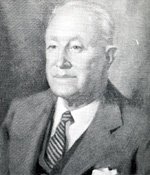
Franklin Conklin Jr.
Franklin Conklin Jr. was the first president of the board of Rutgers(Newark’s predecessor, the University of Newark). Conklin was also a well-known civic leader in Newark. He attended Princeton from 1903-04 and later headed the Flood and Conklin Manufacturing Co. He was also a member and past president of the Essex County Park Commission, past president of The Newark Museum (1943 – 1964). He was the founder and first president of the board of Newark University. Franklin Conklin Jr. had two children, Franklin Conklin III and Eleanor Frances Conklin (Demarest).
Interesting Tidbits About the Property’s More Recent Past
- 1907 Mount Holly Herald, “The White Tavern is situated a hundred yards or so back from the road on a pretty knoll that overlooks the beautiful Somerset Hills and valleys to the East, North, and West. None of the original outhouses or barns remain. Franklin Conklin Property – One room was kept entirely intact, a chamber on the second floor where General Lee had his last breakfast in freedom. The house was set back approximately 100 yards from the road.
- 1943-1950 caretaker, John Placko states that when he got to the Conklin Jr. property in May 1950, there was no house on the site, but there was a tremendous amount of used lumber in the barn.
- 1962- Donald and Margaret Brown built the current house on the site. Colonial Drive was just being completed, along with Rankin Road.
- 1974- Property was sold by Margaret Murphy, remarried after the passing of Donald Brown, 12/12/1974, wife of Donald Murphy. Daniel Murphy, Margaret’s second husband from 1978 till about 1997.
- Martha Brown Heiner states that Conklin built two additional houses on the site for his two sons, Franklin Jr. and Ludolph.
- While Franklin’s original house no longer exists, the two houses of his sons flank the front left and rear of the current structure, Block 78, Lot 11.
- Harry Demarest: Son of Elanor (Demarest) Conklin, wife to Franklin Conklin Jr., and grandson of Franklin Conklin. Memories of visiting Lee Lodge. “As a young man, I remember visiting Franklin Conklin Jr’s house for dinner, going for walks in the woods, eating cheese snacks on the porch. Family legend confirms your story that the tavern was destroyed shortly after Franklin Conklin’s death (to avoid property taxes).”
- Harry Demarest, Astro Data Services, Inc. 974 NW Circle Blvd.Corvallis, OR 97330
- Bernards Twp Zoning office suggested contacting Rick Axt, Twp Surveyor. Look at pages 17 and 23 of the current zoning map. Look for the oldest map and records of Conklin’s actions on the property. Update: Bernards Township records are not kept prior to 1977, so no records are on file.
- John Placko of Colonial Drive noted:
- “When I arrived here to work for Ludolf Conklin in May 1950, there was a lot of wood in the barn, with nails in it that might have been from a torn-down house.” BHB interview on 8/28/2006. “But there was no house on the site. Only Ludolf’s house on the right, and Franklin Jr’s house on the left” (facing the current site from S. Finley).
- John also mentioned a possible soldier grave across the street, possibly General Lee’s guards who were stabbed after surrendering General Lee to General Harcourt.
- Mr Placko finally purchased the home he lives in today from Minetta Realty Company in 1960 for $12,000.
- John Placko Jr., 94 of Bernards Township, died peacefully on Sunday, Sept. 27, 2009, at Bryan Manor Assisted Living Facility in Chester Township. He celebrated his 94th birthday on Thursday, Sept. 24. Born in Bernardsville, he moved to Basking Ridge in 1950 to become the caretaker of the Conklin estate. Later, he served as a rural mail carrier at the Basking Ridge Post Office, retiring in 1985 after 18 years of service. Mr. Placko was an avid beekeeper with many hives throughout the area. He was known as “Honey Bee John,” and his honey won many awards and was sold at local shops. He pursued his hobby into his nineties and was a member of the Morris County Beekeepers Association. He was the oldest living member of St. Mark’s Episcopal Church in Basking Ridge
- Neighbors- Don and Roxanne Rica lived behind the current structure. Noted that there was carriage material in their digging, and it might have been an original garage. They have since moved back to Kenilworth, NJ.
- John Placko’s house was later demolished, and a new modern home was put on the site.
- Margaret Murphy sold the house and, on July 26, 2006, moved to a condo in Lord Stirling Village.
Additional Quotes
“What a lesson of caution is to be derived from this event, and how important the admonition furnished by it! What an evidence of the caprice of fortune, of the fallibility of ambitious projects, and the inscrutable ways of Heaven! The capture of General Lee was felt as a public calamity; it cast a gloom over the country, and excited general sorrow. This sympathy was honorable to the people, and due to the stranger who had embarked his fortune with theirs, and determined to share their fate, under circumstances of more than common peril. Although this misfortune deprived the country of its most experienced chief, I have ever considered the deprivation of a public blessing, ministered by the hand of Providence; for if General Lee had not abandoned caution for convenience, and taken quarters two miles from his army, on his exposed flank, he would have been safe; if a domestic traitor, who passed his quarters the same morning on private business, had not casually fallen in with Colonel Harcourt, on a reconnoitering party, the General’s quarters would not have been discovered; if my visit and the controversy with the Connecticut Light-horse had not spun out the morning unseasonably, the General would have been at his camp; if Colonel Harcourt had arrived an hour sooner, he would have found the guard under arms, and would have been repulsed, or resisted until succor could have arrived; if he had arrived half an hour later the General would have been with his corps; if the guard had paid ordinary attention to their duty, and had not abandoned their arms, the General’s quarters would have been defended; or if he had obeyed the peremptory and reiterated orders of General Washington, he would have been beyond the reach of the enemy. And shall we impute to blind chance such a chain of rare incidents? I conscientiously reply in the negative; because the combination was too intricate and perplexed for accidental causes, or the agency of man. It must have been destined.”
General Wilkinson wrote in his later memoirs
(about General Lee and the December 13th morning in Basking Ridge)
August 24, 2006
“Sent the pictures on to my Mom (Margaret (Brown) Murphy. We had an interesting chat about it this morning. She said that Finley used to aim right into the Astor estate (there is a second entrance in the fence that is roped off by fence now), and then take a very sharp dangerous right turn.
They moved Finley a little closer to Mom’s house and Lutz’s house in order to ease that turn. This must’ve been done in 1961 or 1962 because they were taking out dump trucks of dirt. Mom and her neighbor asked them to dump a load up by the parking area at Mom’s house to put some good dirt in there.
Mom’s driveway used to go in a little and then bend to the left, where the Lutz’s driveway is now. They were separating it into 2 driveways at the time.
She still believes the house was on her property. Close to where her house sits now. When they dug the foundation for her house, they dug up a long piece of cement foundation. When they finished building her house, they put it back in for fill, instead of hauling it away.”
Martha Brown Heiner – Owned a home on the property
March 10, 2022
I just sent you a lengthy note on the website message board — but it’s not clear to me whether the document I was trying to send you went through, so I am attaching another copy here. It is a brief memoir written by my ancestor, Timothy Brewster, in 1780. In it, he says that he operated White’s Tavern from December 1777 to March 1779. I was intrigued to read your account of Widow White’s tavern. I have a typewritten transcript of a brief memoir written by my ancestor, Timothy Brewster, on August 19, 1780.
In it, he says that he and his wife moved to “the Jerseys” after receiving “pressing invitations from Aunt White to come and live with her and keep the tavern.” He says that he “settled matters with her” and relocated to “Baskingridge,” arriving on December 1, 1777 — and kept the tavern until March of 1779, “at which time the Confiscated farms were sold, and I bought the farm I now possess.” I presume this is a reference to his farm in New Windsor, NY. His house in New Windsor still stands, and is now part of Schlesinger’s Steakhouse there. I am attaching the transcript for your reference. I do not know when this transcript was done. I believe the handwritten text is with the Orange County (NY) historical society. I know I received a copy of the transcript over 40 years ago — and I suspect the transcript is much older than that. Your website notes that White’s Tavern was known as “Brewster’s Tavern” before it was White’s Tavern, which may well be true, but it is clear from this memoir that Timothy Brewster managed the tavern after Widow White — beginning a year after the capture of General Lee. I do not know why he refers to the Widow White as “Aunt White,” nor do I know anything about anyone in my family managing the tavern before Ms. White and her husband. In any event, I thought you would find this memoir of interest. Thank you for the work you do to preserve local history.
Christopher Brewster
Reference People/Articles
- John Placko- (Working) Manager for Ludolf Conklin Jr. (1950). Since passed away.
- Essay – Essays Historical and Literary, published by Macmillan in 1902. John Fiske- Title General Charles Lee, A Soldier of Fortune
Related Posts from Mr. Local History
Insights: General Charles Lee’s Capture at Widow White’s Tavern in Basking Ridge & Washington’s Delaware Crossing Impact
Views: 956 December 13, 1776, stands as the most electrifying day in Basking Ridge’s history, when the sleepy colonial crossroads suddenly became the center of the Revolution. At dawn, the… Read More »Insights: General Charles Lee’s Capture at Widow White’s Tavern…
Widow White’s Tavern Series – A Basking Ridge American History Moment
Views: 251 December 13, 1776, stands as the most electrifying day in Basking Ridge’s history, when the sleepy colonial crossroads suddenly became the center of the Revolution. At dawn, the… Read More »Widow White’s Tavern Series – A Basking Ridge American…
December 13, 1776 – Basking Ridge , New Jersey Altered American History
Views: 8,621 The world might have had a different look if it weren’t for this day’s event.December 13, 1776 in Basking Ridge, New Jersey. Basking Ridge, New Jersey’s most famous… Read More »December 13, 1776 – Basking Ridge , New Jersey…
New Jersey Rev War Series Mr. Local History Project
Views: 10,288 New Jersey is known as the “Cockpit of the American Revolution” for a reason – because it was. More battles, more encampments, more strategies took place in New… Read More »New Jersey Rev War Series Mr. Local History Project
Widow White – Mary Jarvis Whitaker Brown White
Views: 1,006 This is a story about a widow, a General, and a War for Independence. For over a decade, I’ve been researching the story behind the 1776 capture of… Read More »Widow White – Mary Jarvis Whitaker Brown White
Widow White’s Tavern in Basking Ridge was More Than a Grog Stop
Views: 27,118 Basking Ridge, New Jersey’s Most Famous Incident Yes, this historic event made the series, so look for it. The episode covering that timeframe is Episode 3: “The Times… Read More »Widow White’s Tavern in Basking Ridge was More Than…
Three Historic Moments That Changed Basking Ridge & America
Views: 11,805 On the internet, we’ve created the #3LOCALHISTORYEVENTCHALLENGE, where you share your town’s three most historic events. As the historian for Bernards Township, representing Bernards Towns#hip and its four… Read More »Three Historic Moments That Changed Basking Ridge & America
Widow White’s Tavern 7th Wooden Historic Village Keepsake
Views: 6,176 Be part of the Widow White’s Tavern limited edition run. Mr Local History is proud to announce the release of the 7th in the collectible series, the infamous… Read More »Widow White’s Tavern 7th Wooden Historic Village Keepsake
John Morton – General Washington’s Rebel Banker Stashed in Basking Ridge
Views: 6,796 John Morton was a Colonel in the Continental Army. Still, he relinquished his commission in 1761 to become a highly successful merchant, specializing in the trade of flax… Read More »John Morton – General Washington’s Rebel Banker Stashed in…
Reference Materials
| Article: | Date | Author | Description |
| Lee Papers | 1873 | By Charles Lee, Henry Edward Bunbury | Entitled the “Lee Papers” An extract. The basis of the whole collection has been the mass of original papers left by General Lee to William Goddard, and still preserved in his family.”- |
| Amazon Books | 1860 | George H. Moore | MOORE, George H. Treason of Charles Lee, Major General, Second in Command in the MOORE, George H. The Treason of Charles Lee, Major General, Second in Command in the American Army of the Revolution. N.Y., 1860. 1st ed. Illus. with portrs. and folding facs. xii, 115pp. |
| Mary Jarvis (Jervis) | Long Island Family Genealogy | Long Island genealogy highlighting Mary White’s first mother and father. | |
| 1887 | Dr. William Pennington | Paper documents historical ownership of Widow Whites Tavern (Bernardsville Spinning Files) | |
| Bernards Twp Library | J.H. Van Horn | Historic Somerset- Articles of the times (Bernards Historical Room 974.914) | |
| Bernards Twp Library | 1907 | Mount Holly Herald article. (Frank Conklin discussed- on file at Bernards Twp library). | |
| Hard Copy (Not Scanned yet) | Feb. 18, 1933 | Rev. Oscar Voorhees | Paper- General Charles Lee and his capture at Widow White’s Tavern, Basking Ridge NJ by Rev. Oscar M. Voorhees. Feb. 18, 1933. on file at Bernards Twp library. |
| Library of Congress Digital Version | 1889 | Andrew D.Mellick Jr. | “The Old Farm” from “The story of an Old Farm”. History of the famed Melicks of Bedminster. |
| Basking Ridge Presbyterian Church | Burial Records of the cemetery – PDF | ||
| Bernardsville News Recount of the Tavern | June 30, 1993 | Bernardsville News, W. Jacob Perry | Bernardsville News historical piece on the History of the Widow Whites Tavern, General Lee, and Franklin Conklin Jr. |
| 2001 | Star Ledger General Lee capture recount with artwork from 2001. Love the ending. (Bit of poetic license). | ||
| April 26,1905 | Bernardsville Times, | 1905 recount of General Lee Capture | |
| The Scoundrel | Memoirs of General James Wilkinson | Referenced journals | |
| Dec 12, 1913 | Basking Ridge Home Reminded of General Lee’s Escapade in 1776. | A funny article about the 150th anniversary noted in the Newark Call on December 12, 1913.Quotes “A night of Gaiety” and General Lee’s interest in Widow White | |
| Widow Whites Property Survey | 1961 | Survey Document | Survey of the original area in 1961 (Known then as the Donald R and Jane H Hagner property |


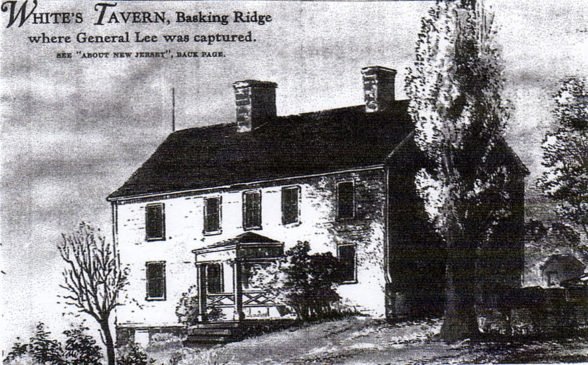
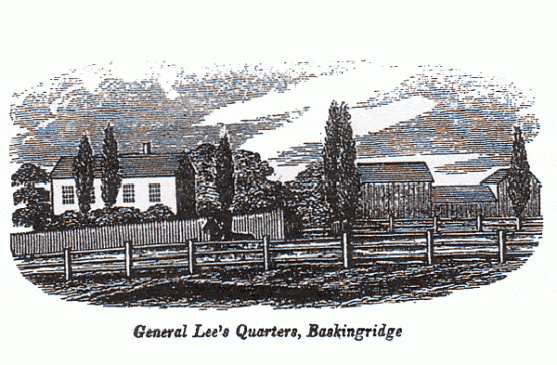



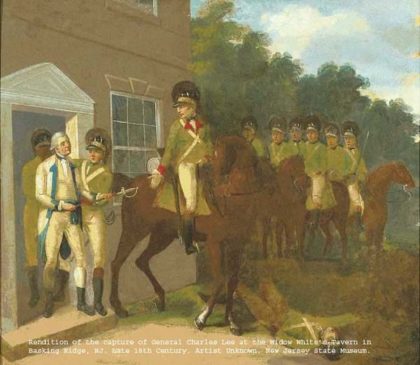
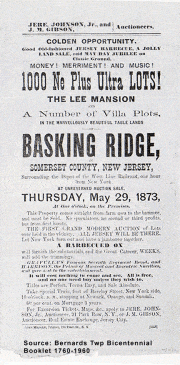
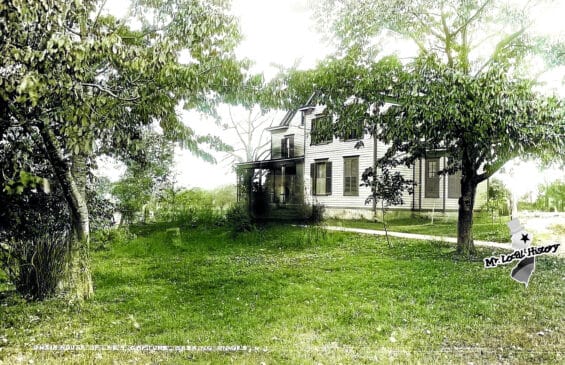
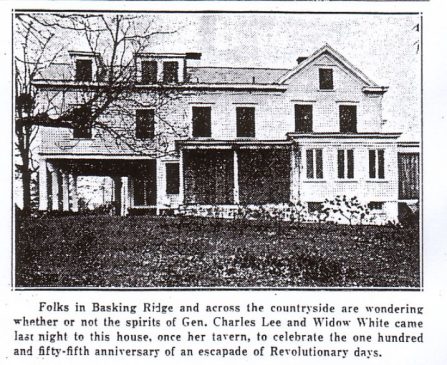

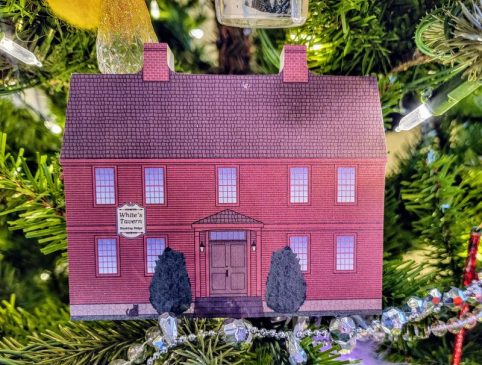
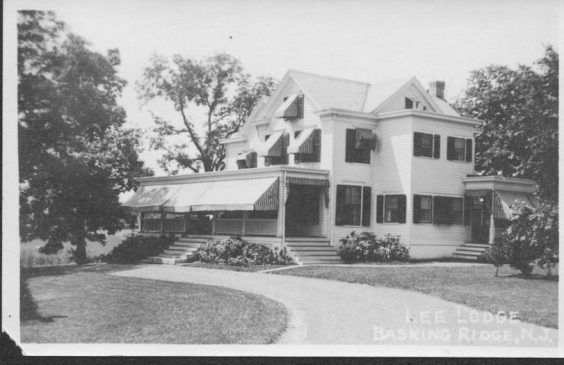
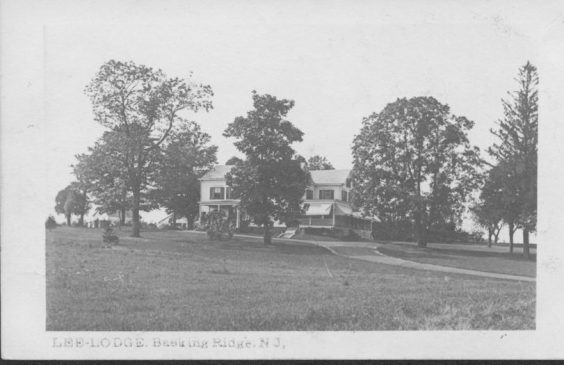
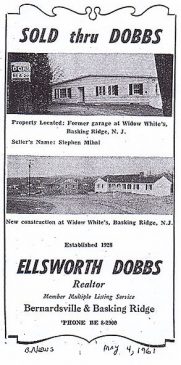
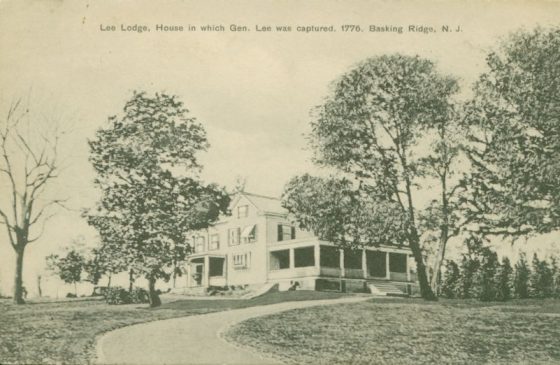
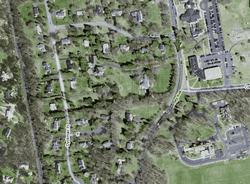


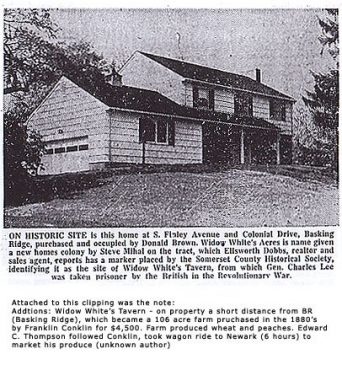



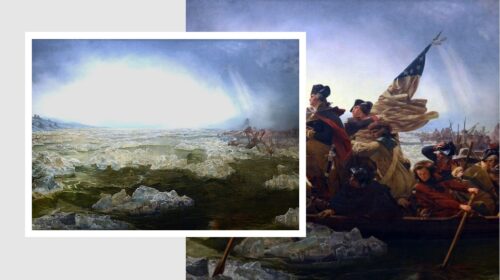
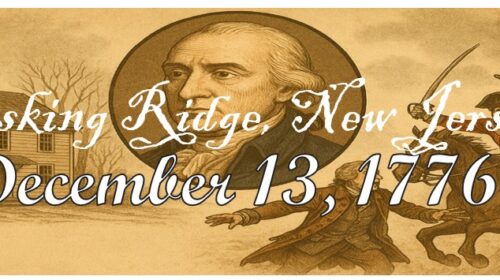
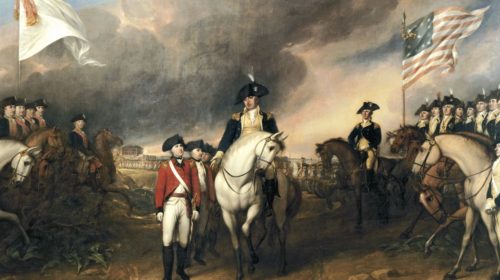


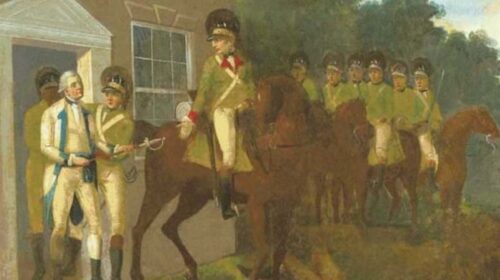
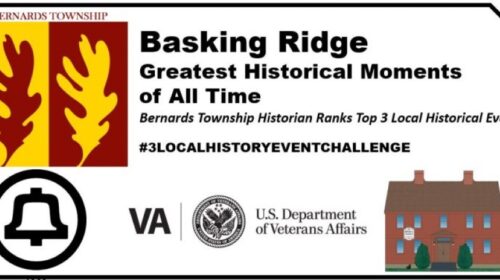
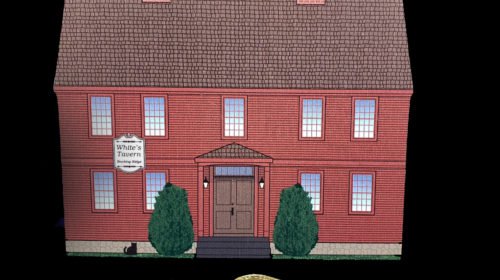
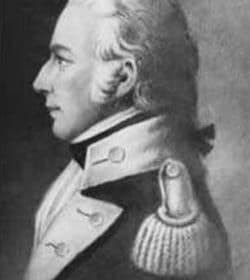
Hi nicely done. You should read my book Kidnapping the Enemy: The Special Operations to Capture Major Generals Charles Lee & Richard Prescott (Westholme, 2014). I spoke about the book in 2015 I believe at the school house at Basking Ridge. It was a nice event. I have some friends who just moved there. Best. Christian McBurney